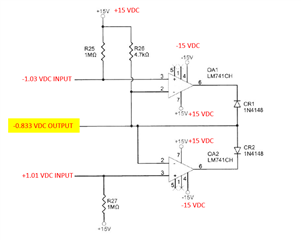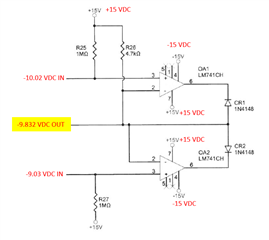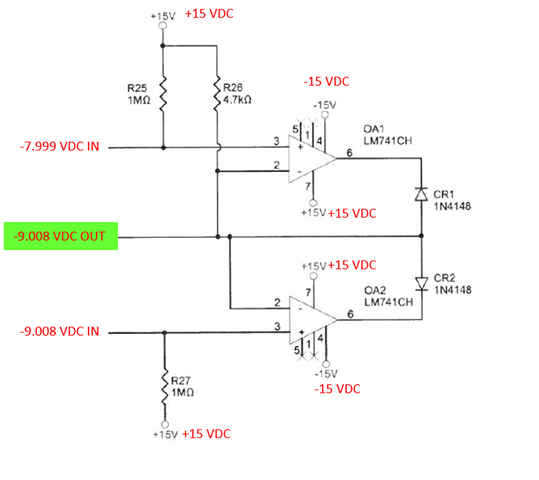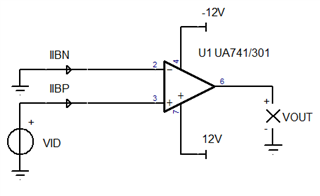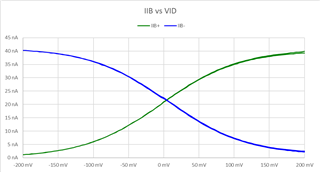Other Parts Discussed in Thread: UA741,
Hello E2E design support. I reached out a few months ago regarding determining the failure mode of LM741CH op amps. I am reaching out again with some more information in hopes to find a possible cause for the observed failures.
In the circuit there are 2 LM741CH ICs configured for a most negative auctioneering circuit. There are two input voltages (one for each op amp) and the output of the circuit should match whatever the lower of the 2 input voltages is. Below are 2 different measured scenarios where the op-amps failed. Pin 2 of the op amps is the output of the circuit below and should correspond to the lower of the two input voltages as shown. In both cases the output voltage measured did not correspond to either of the inputs.
The positive and negative rails of each IC were measured to be correct and no issues were found with the diodes at the output of the ICs or with the resistors. The input voltages were also verified to be within the input voltage specification of the LM741CH per the datasheet. Upon replacement of both ICs (OA1 and OA2) with new LM741CH chips the outputs were measured to be correct and corresponded to the lower of the 2 inputs. So we are still trying to determine what may cause the output to be out of tolerance with respect to the input voltage to the IC. Pins 1 and 5 for each op amp are not connected within the circuit and are left open. Any information is greatly appreciated.
